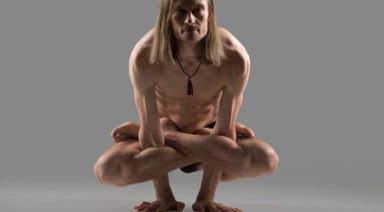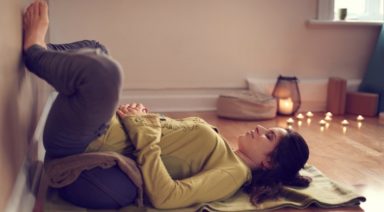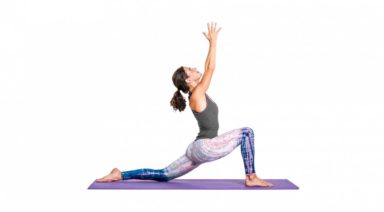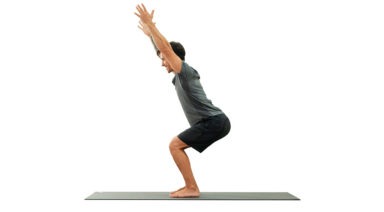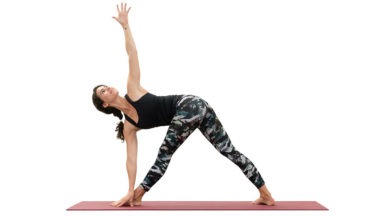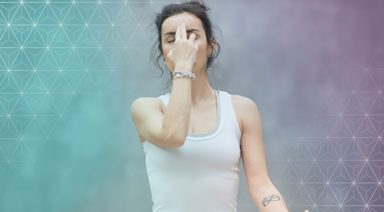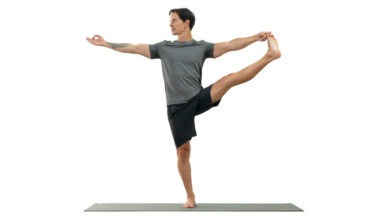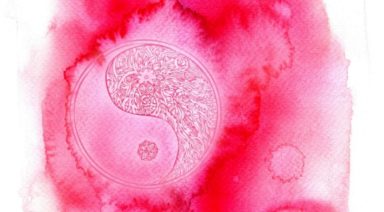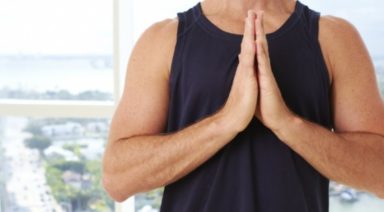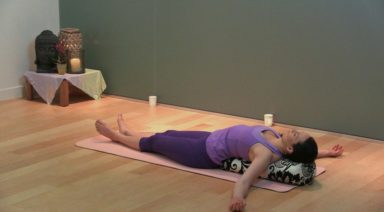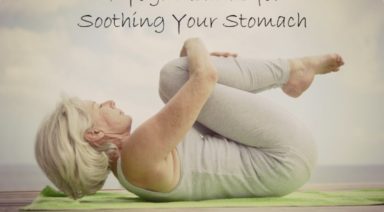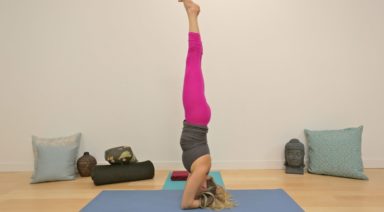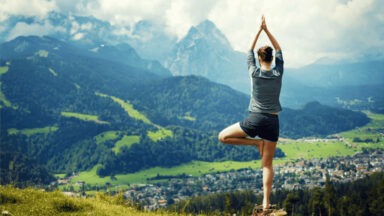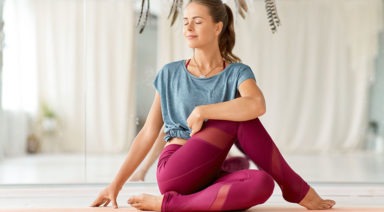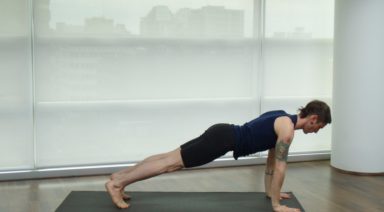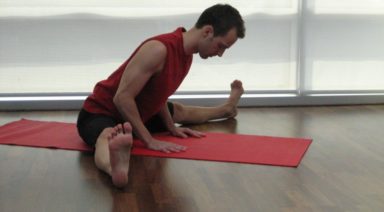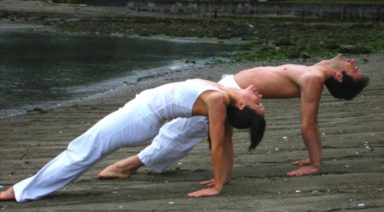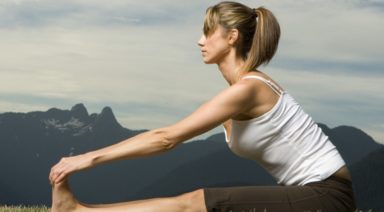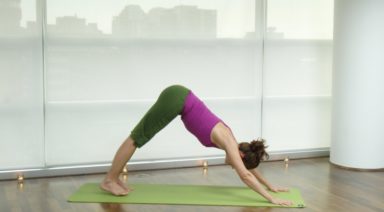Hatha Yoga Poses
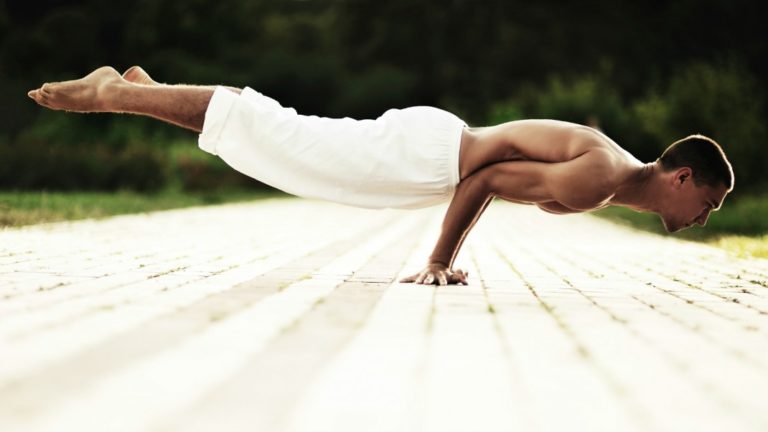
Swami Svatmarama’s Hatha Yoga Pradipika (Light on Yoga) is one of the most influential early texts on hatha yoga practice. Written sometime between the 14th and 15th century CE, the text includes descriptions of 16 hatha yoga poses, eight pranayama (breathing) techniques and a number of different seals (mudras) to be used to redirect prana (energy) during meditation.
Swami Svatmarama believed that the regular practice of Hatha Yoga asanas could give “steadiness, health, and lightness of body.” As such, he recommended that the practice of yoga asana should be performed as the first step in the practice of Hatha Yoga.
Many of the postures in the Hatha Yoga Pradipika are variants on the full lotus pose, and as such are relatively advanced in nature. This article includes a brief survey of 10 of these hatha yoga asanas, an overview of their benefits and instructions for their practice.
Virasana
Benefits
Virasana stretches the ankles, gluteal muscles and other smaller muscles in the hips.
Notes
In modern day practice Virasana is performed with the shins facing downward with both legs parallel to the sides of a yoga mat. In contrast, Swami Svatmarama’s description of Virasana much more closely resembles the modern day for of Gomukhasana, (Cow-Face Pose). Instead of folding the legs back near the sides, this pose is done with one leg crossed over the other.
While the modern day equivalent of this posture includes specific positioning exercises for the arms, Swami Svatmarama only includes instructions on leg positioning.
The Pose
Come to Dandasana, (Staff Pose – a seated posture with both legs straight). Cross your right knee over your left knee, and draw your right foot back near the side of your left hip. To do the same with the other leg, lean to your left and draw your left foot back near the side of your right hip.
One you’ve wrapped your legs into the initial position, lean forward and use your hands to press your knees closer together. With practice, one knee will stack on top of the other. Draw your feet tightly back near your sides, ground both sitting bones downward into the floor, lengthen your spine upward, and forward fold over your legs to deepen the stretch.
Kukkutasana
Benefits
Kukkutasana, (the Rooster’s Pose) strengthens the chest, shoulders, arms, and wrists, and improves balance. Full performance of the posture requires the ability to comfortably sit in Padmasana (the Full Lotus pose)
The Pose
From a seated position, draw your right foot into the half lotus pose by placing the blade edge of your right foot in your left hip crease. Lean back, grab your left foot, and draw it up and over your right knee in similar fashion. Continue sliding your left foot up the front of your thigh until the edge of the left foot rests near the right hip crease.
Once you’ve positioned your legs in the full lotus pose, thread your right wrist and forearm into the space between the muscles of your right calf, inner thigh muscles and hamstrings. Slide your left wrist and forearm into the same position on the other side.
To enter the final posture, rock backward slightly to get momentum. Next, rock forward quickly onto your hands and lift your buttocks off of the ground.
Uttanakurmasana
Benefits
Uttanakurmasana (the Upside Down Tortoise Pose) stretches the muscles of the hips and the back. The pose also tones the abdominal muscles.
The Pose
After holding Kukkutasana for some time, allow your hips to settle back down to the ground. Keep your arms threaded through your legs and roll onto your back. Belly crunch up, slide your arms even further through your legs, bend your elbows and hold your chin with both hands.
Matsyendrasana
Benefits
The Hatha Yoga Pradipika lists a number of specific benefits for Matsyendrasana (the Lord of the Fishes Pose). These benefits include increased appetite, the destruction of multiple diseases and the awakening of kundulini energy.
The Pose
From Dandasana place your right foot in the half lotus pose. Roll your weight toward your right hip and cross your left ankle over the top of the right knee as if you were going to do the full lotus pose. Allow your left foot to rest on your thigh, just near your right knee.
To initiate the twist, draw your left knee toward your chest so that your left knee faces upward and place your left foot on the floor. Twist your torso to the left, cross your right elbow over the leg and grab your left foot with your right hand. Place your left hand on the floor behind you to stabilize the balance, or alternatively, wrap your left arm behind your back to grab your right inner thigh.
Paschimottanasana
Benefits
Paschimottanasana (the Intense Back Stretch) is a deep stretch for the entire posterior chain of the body. The posture creates openness in the calves and hamstrings and can relieve tension in the back muscles as well.
According to Swami Svatmarama, Paschimottanasana is one of the most important hatha yoga asanas. He claims that the posture increases health, reverses the breath’s flow, improves digestive power and flattens the belly.
Notes
While the modern form of this posture is typically taught with a relatively straight spine, Swami Svatmara’s variation integrates strong spinal flexion for a deeper stretch to the back muscles. Because of this, the text directs the practitioner to rest their head on their knees as opposed to the shins.
The Pose
From Dandasana, straighten both legs. Grab the flesh of your buttocks and slide your sitting bones backward to tilt your pelvis forward. Internally rotate your thighs by rolling your upper thighs inward and reach forward to grab your big toes. Ground downward through your hip-creases, pull your belly in and elongate your spine. Forward fold, and allow your head to rest on your knees.
Mayurasana
Benefits
Mayurasana (the Peacock’s Pose) is a challenging posture that strengthens the wrists, chest, shoulders, back muscles, and the gluteal muscles. Regular performance of the posture also improves balance.
The Hatha Yoga Pradipika attributes a number of benefits to this hatha yoga pose. According to the text, this posture is said to be good for digestion and is purported to have the ability to overcome poisonous snakebites. It’s also credited with the ability to overcome numerous diseases, including enlargement of the spleen and enlargement of the abdomen.
The Pose
Come to a kneeling position on your shins. Sit on your heels and slide your knees apart until they’re slightly wider than hip’s width apart.
Place your hands on the floor between your legs, with your wrists facing forward and your fingers facing your waist. Lean forward, place your elbows on your abdomen and transfer your weight forward until your knees lift off of the floor. Maintaining the balance, straighten both legs as you continue to hover.
Dhanurasana
Benefits
Dhanurasana (the Bow Pose) stretches the hip flexors, abdominals, chest and shoulders. The posture also strengthens the back muscles.
Notes
In the modern day form of this hatha yoga asana, the arms are extended backward and the ankles are clasped in order to open the chest. The version in the Pradipika integrates a more challenging overhead bind into the posture for a much deeper shoulder opening.
The Pose
Lie down on your belly and prop yourself up on your elbows like a sphinx. Bend your legs and externally rotate your ankles so that your toes point outward toward the sides of your mat.
Rotate your torso to your right, turn your right hand upward, and clasp the inner arch side of your right foot with your right hand (or alternatively, your big toe). Press your right foot upward into your right hand and rotate your elbow outward and upward until your elbow points toward the ceiling. Continue to hold on, rotate your chest left, and do the same on the other side.
Bhadrasana
Benefits
Bhadrasana (the Auspicious Pose) stretches the the inner thighs and opens the muscles of the pelvic floor.
Notes
In modern practice, this hatha yoga asana is more commonly known as Baddha Konasana (the Bound Angle). While the modern form of Baddha Konasana often integrates spinal flexion with a variety of different forward folds, Swami Svatmarama’s variation is done while remaining upright.
The Pose
Draw your heels toward your inner groin and allow your knees to drop outward like the pages of an open book. Place your hands behind you on the floor, lean forward slightly and slide your hips closer to your heels.
Once you’ve positioned your hips and legs, reach around to grab your feet or big toes with both hands. Sit up tall and press your knees outward and downward toward the ground.
Padmasana
Benefits
Padmasana (the Lotus Pose) is an excellent pose for seated meditation because it makes it very easy to avoid slouching. The posture also creates openness in the hips and inner thigh muscles. In addition, the Hatha Yoga Pradipika mentions that this hatha yoga pose also clears blockages in the body’s energy channels (nadis) when done regularly.
The Pose
Come to a comfortable, cross-legged seated position with your right leg crossed in front of the left. Pick up your right foot with both hands, swing your right knee out to the right hand side of the room, and draw your heel closer to the front of your body. Continue pulling your right foot inward toward your belly and slowly swing your right leg to the left until the edge of your right foot rests in your left hip crease.
Once the right leg is in the half lotus pose, place one hand behind you on the ground and lean backward. Use your other hand to pull your left leg upward and over your right knee. Slide your left foot to the right hip crease.
Once your legs are in the full lotus pose, Swami Svatmarama recommends that you sit up tall, place your upturned hands on your thighs, and redirect your eyes to the tip of your nose.
Savasana
Benefits
The Hatha Yoga Pradipika mentions that Savasana (The Corpse Pose) is restful for the mind and good for removing fatigue.
The Pose
Lie on your back with both eyes closed. Slide your legs apart until your legs are positioned hip’s width apart or wider, and let your big toes fall outward toward the sides of the room. Slide your arms out from your sides as well. Your palms can either face upward or downward.
Close your eyes, and redirect your focus to your breath.
Please note, all asymmetrical postures should be done on both sides. A full overview of all 16 hatha yoga poses can be found in Brian Dana Aker’s translation of the Hatha Yoga Pradipika.
Five Hatha Yoga Practices on Gaia
Defining Yoga Asanas

The Sanskrit word asana translates into seat in English, but if you say the word to yoga practitioners, all the postures and stretches they know will flash through their minds. Patanjali’s Yoga Sutras simply define asana as a “steady, comfortable posture,” which could be any shape.
In modern yoga context, an asana refers to a physical pose i.e. balasana (child’s pose) or trikonasana (triangle pose).
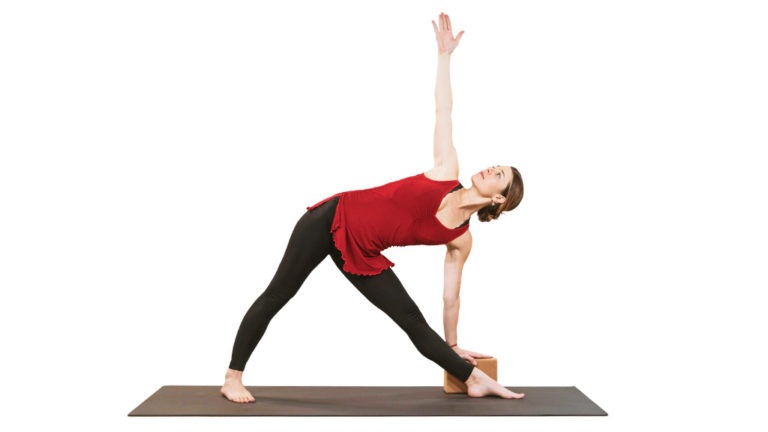
Trikonasana (triangle pose)


